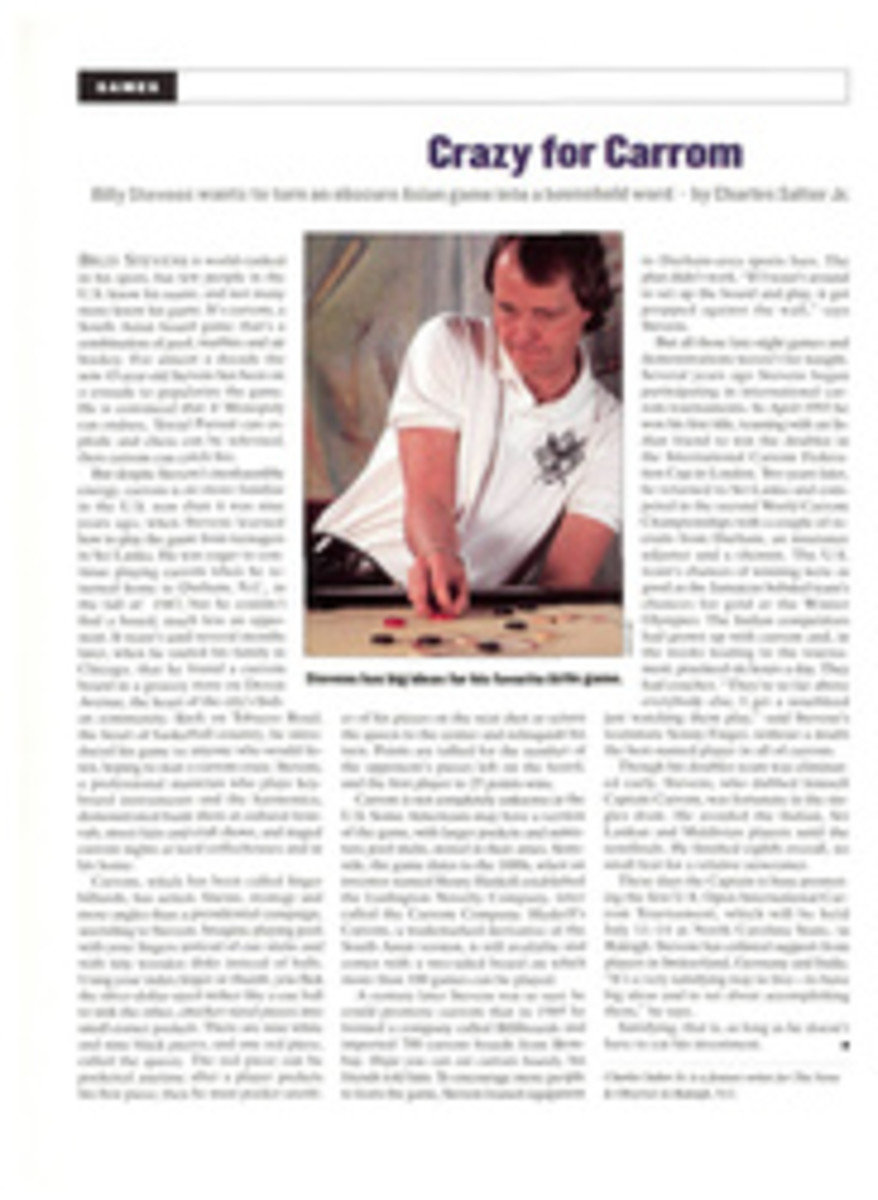
NO MOUNTAIN TOO HIGH FOR HER JUNKO TABEI DEFIED JAPANESE VIEWS OF WOMEN TO BECOME AN EXPERT CLIMBER
Junko Tabei sat bolt upright when she heard the rumble. It was
12:30 on the morning of May 4, 1975, and Tabei and 14 other
Japanese female climbers had been asleep at Camp II, 21,326 feet
above sea level on a freezing, windswept peak between Mount
Nuptse and Mount Lhotse. The thunderous sound filled Tabei with
dread. She had never heard the sound before, but she knew what
it was.
Avalanche.
She was thrown. Tabei and her four tentmates tumbled
chaotically, trapped under a white wave of snow and ice crashing
down from Lhotse. Their tent tangled around them. Bodies banged
together. Equipment slammed into them. Their terror slowed time
to the torturous pace of an interminable nightmare.
When the rumbling ceased, Tabei was pinned under her four
companions. She had a vision of her 2 1/2-year-old daughter,
Noriko, playing outside their home near Tokyo. Then she blacked
out.
When Tabei opened her eyes, she felt a rush of pain. Then a
flood of fear. Had they all survived? Miraculously, they had.
Tabei owed her life to the team's six Sherpas who had dragged
her out of the snow by her ankles. "As soon as I knew everyone
was alive," Tabei says, "I was determined to continue."
Determination alone, however, couldn't make her walk. Her body
was covered with welts and bruises, and she had wrenched her
lower back and legs. It was two days before she could rise on
shaky feet. Yet she refused to relinquish her role as the
group's climbing leader. Tabei took her place at the front of
the line as the women resumed their ascent. And she stayed at
the front, even though she often had to crawl.
Twelve days later, at 12:30 p.m. on May 16, Tabei clambered on
battered hands and knees to a spot she describes as "smaller
than a tatami mat." She turned her back on the stormy edge of
Nepal and peered down at a tranquil valley in Tibet. Junko Tabei
had become the first woman to reach the summit of Mount Everest.
She felt no elation. The pain robbed her of that. "All I felt
was relief," she says. And trepidation. She still had to get down.
Including that historic climb of Everest, Tabei has scaled 69
major mountains, and in 1992 she became the first woman to climb
the tallest mountains in the world's seven major regions. Her
achievements are even more remarkable considering the path she
took to the top.
Junko Ishibashi was born in 1939, the fifth daughter in a family
of seven children in the small town of Miharumachi, in northern
Japan, in an area that was not damaged by bombing in World War
II. Though she never wanted for food, like many Japanese
children of her generation, she was frail. "I was stamped as a
weak child," she says. At age 10, however, she tagged along when
a teacher took some of her classmates to climb two peaks, Mount
Asahi (6,233 feet) and Mount Chausu (6,365), in Nasu.
"I was shocked," Tabei says, recalling the upper levels of the
mountain. "It wasn't green." The volcanic landscape and the
freezing temperatures in summer appealed to her. Climbing also
seemed to suit her physical condition and her temperament. "It
wasn't like a competition," she says. "Even if you go slow, you
can make it to the top. Or, if you must, you can quit at the
middle."
If Tabei was captivated, she was not consumed. "Japan was very
poor at that time," she says. "I couldn't think about climbing
mountains, or any kind of leisure. We had to worry about what we
would eat."
Despite Japan's tradition of explorers and adventurers, many of
those who dared to strike out on their own paths--especially
women--risked the fate foreseen in the Japanese adage, "The nail
that sticks up will be hammered down." An adventurer's dreams
were often not considered appropriate for a young Japanese woman.
Tabei made a few climbs in high school, but her goal was to go
into teaching, an acceptable career for a woman. In 1958 she
enrolled in Tokyo's Showa Women's University. After graduating
in 1962 she joined several clubs that were primarily for men.
"Some of the men wouldn't climb with me, but a few older ones
were more supportive," says the 4'9" Tabei. "Some thought I was
there to meet men, but I was only interested in climbing."
It wasn't long before she had scaled all of Japan's major peaks,
the highest of which is Mount Fuji, 12,388 feet above sea level.
In 1965, around the time she climbed Tanigawa-Dake, near Tokyo,
she met 25-year-old Masanobu Tabei, who was well-known in
Japanese mountaineering circles. They were married when Junko
was 27, despite the objections of her tradition-bound mother,
who disapproved because Masanobu wasn't a college graduate.
In 1969 Junko formed the Joshi-Tohan (Women's Mountaineering)
Club, the first of its kind in Japan. Her dream, like that of
most climbers, was to scale the big peaks, but money and
time--the Japanese get only about two weeks of vacation each
year--held her back. Still, by 1970 she and her club felt ready
to tackle Annapurna III. As group leader she was in charge of
logistics, a daunting task for someone who had never been
outside of Japan. Her shock at seeing the extremes of wealth and
poverty, first in Calcutta, then in Nepal, was enormous.
She funded her passion for climbing by working as an editor on
the staff of the journal of the Physical Society of Japan. Her
job as group leader required asking a lot of questions, but many
people in Japan consider this--to admit you don't know
something--a sign of weakness. The image of the woman whose
strength is her ability to remain silent is still powerful in
Japan.
"When we began the climb we were determined to only show each
other our strong sides," Tabei says. "When you are climbing a
mountain, your life depends on the exact opposite. You can't be
reserved and not say what you think or feel."
Several of the women on the Annapurna III ascent became sick
from the altitude. Yet no one wanted to admit to weakness. Tabei
was responsible for her fellow climbers, and she needed to know
the truth about their conditions and capabilities. "You need to
have a relationship where, when you're climbing, you can say, 'I
need to go slower,'" she says.
Go slow they did, eventually reaching the summit on May 19,
1970. The ascent profoundly changed Tabei. For her, there would
be no more slaving into the late hours to prove she was her
company's most loyal worker. No more fears about speaking her
mind. No more concerns about what people said behind her back.
"If people want to call me 'that crazy mountain woman,' that's
O.K.," she says.
It wasn't until she climbed Annapurna III that Tabei thought of
trying to take on Everest. Her group applied to the government
of Nepal for permission to climb the mountain in 1971. The
climbing schedule was full until 1975. It would be a long wait,
but Tabei used the time to line up sponsorship. "Most companies'
reaction was that for women, it's impossible to climb Mount
Everest," Tabei says. But she eventually got help from the Tokyo
newspaper Yomiuri Shimbun and from Nihon Television.
After the Everest climb came the publicity. The king of Nepal
sent congratulations. Tabei's name appeared in newspapers and
textbooks; she was honored by the Japanese government; there was
a television miniseries about the expedition; and she toured
Japan making personal appearances. Tabei, however, was never
comfortable with fame. "I was the 36th person to climb Everest,"
says the first woman to have climbed it. But the attention she
received and the responsibility she felt were overwhelming, and
she never sought corporate funding again. "If I accept
sponsorship, then climbing the mountain is not my own
experience," she says. "It's like working for the company."
She continued her pursuits but with less fanfare, climbing,
among other mountains, Tanzania's Kilimanjaro in 1980,
Argentina's Aconcagua in 1987, the U.S.'s McKinley in 1988,
Russia's El'brus in 1989, Antarctica's Vinson Massif in 1991 and
Indonesia's Carstensz Pyramid in 1992.
Everest, though, has a special place in Tabei's life. She is a
representative of the Japanese chapter of the Himalayan
Adventure Trust, a group dedicated to preserving Everest's
environment. The group was instrumental in building an
incinerator on the mountain for climbers' debris. Tabei also
participates regularly in "clean-up climbs" in Japan and the
Himalayas.
At age 56 Tabei says she is starting to slow down, but her
climbing activity belies this. Her current goal is to climb the
highest mountain in every country in the world. Last year she
climbed the highest peaks in Panama, Costa Rica, South Korea,
Venezuela and Sri Lanka. She would like to climb more often with
her family--Masanobu, who works for Honda, and their daughter,
Noriko, and son, Shinya--but it's hard for them to get vacation
time together.
Tabei is admired now in Japan as a role model, not just for
women, but for all people who want to strike out on their own
and pursue their dreams. She frequently lectures on her
experiences and encourages people to be "the nail that sticks
out." And while her climbs attract attention because of her
reputation, she has never been a headline seeker. "Climbing the
mountain," she says, "is its own reward."
Robert Horn, a freelance writer based in Thailand, is a frequent
contributor to SI.
B/W PHOTO: AP In 1975 Tabei became the first woman atop Everest. [Junko Tabei]
COLOR PHOTO: REBEN KIKAKU Tabei, who still climbs, is now a role model in Japan. [Junko Tabei]

